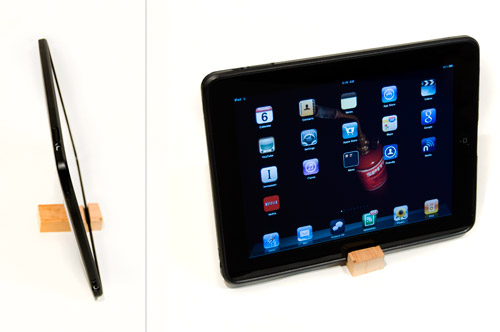
If you liked the last Arduino + ShiftBrite post, but don’t like Perl, here’s a Processing sketch for you… It’s a simple Light Organ that lights up the ShiftBrite in a specific color based on pressing a key.
(Once again we’re using the HughesyShiftBrite library.)
Here’s the code for the Arduino, which is pretty similar to our code from last time:
/*
* LightOrgan.pde - Arduino
*/
#include "HughesyShiftBrite.h";
HughesyShiftBrite sb;
void setup()
sb = HughesyShiftBrite(10,11,12,13);
sb.sendColour(0,0,0);
Serial.begin(9600);
}
void loop() {
int input = Serial.read();
switch (input) {
case 48:
sb.sendColour(0,0,0);
break;
case 49:
sb.sendColour(700,0,0);
break;
case 50:
sb.sendColour(0,700,0);
break;
case 51:
sb.sendColour(0,0,700);
break;
case 52:
sb.sendColour(700,700,0);
break;
case 53:
sb.sendColour(0,700,700);
break;
case 54:
sb.sendColour(700,0,700);
break;
case 55:
sb.sendColour(900,300,300);
break;
case 56:
sb.sendColour(300,900,300);
break;
case 57:
sb.sendColour(300,300,900);
break;
}
delay(5);
}
The only real difference here is the colors we are using…
Once that’s loaded on the Arduino, create a new sketch in Processing with the following code:
/*
* LightOrganController.pde - Processing
*/
import processing.serial.*;
Serial myPort;
void setup() {
println(Serial.list());
myPort = new Serial(this, Serial.list()[0], 9600);
myPort.buffer(1);
size(200, 200);
background(0,0,0);
}
void draw() {
// nothing needed here
}
void keyPressed() {
if (int(key) == 48) {
myPort.write(48);
fill(0,0,0);
rect(5,5,190,190);
}
else if (int(key) == 49) {
myPort.write(49);
fill(200,0,0);
rect(5,5,190,190);
}
else if (int(key) == 50) {
myPort.write(50);
fill(0,200,0);
rect(5,5,190,190);
}
else if (int(key) == 51) {
myPort.write(51);
fill(0,0,200);
rect(5,5,190,190);
}
else if (int(key) == 52) {
myPort.write(52);
fill(200,200,0);
rect(5,5,190,190);
}
else if (int(key) == 53) {
myPort.write(53);
fill(0,200,200);
rect(5,5,190,190);
}
else if (int(key) == 54) {
myPort.write(54);
fill(200,0,200);
rect(5,5,190,190);
}
else if (int(key) == 55) {
myPort.write(55);
fill(250,125,125);
rect(5,5,190,190);
}
else if (int(key) == 56) {
myPort.write(56);
fill(125,250,125);
rect(5,5,190,190);
}
else if (int(key) == 57) {
myPort.write(57);
fill(125,125,250);
rect(5,5,190,190);
}
else {
myPort.write(48);
fill(0,0,0);
rect(5,5,190,190);
}
}
When you run the Processing code, it will draw a black box on the screen, and if you press any number between 0 and 9 it will change the color of the box, as well as changing the color of the ShiftBrite.

If you’re lucky enough to have a number keypad on your keyboard (I mean, since Apple stopped including that part of the keyboard) you can go nuts hitting all the keys from 1 through 9 (and zero for “off” or black) and put on a nice little light show.
If you don’t care about the on screen display and just want to control the ShiftBrite, here’s some simpler code:
import processing.serial.*;
Serial myPort;
void setup() {
println(Serial.list());
myPort = new Serial(this, Serial.list()[0], 9600);
myPort.buffer(1);
}
void draw() {
// nothing needed here
}
void keyPressed() {
if ((int(key) > 47) & (int(key) < 58)) {
myPort.write(int(key));
}
else {
myPort.write(48);
}
}
Since we don’t need to draw anything based on the key pressed, we just look for a key between 0 and 9 and send it over the serial port.
Disclaimer: This code is probably pretty damn basic, but I’m a fan of documenting the process, and I’m still learning (and having fun!) and I hope someone finds it useful. If you’ve got suggestions or improvements, let me know… thanks!
(Thanks for reading this. If you’re reading it on Facebook or Google Reader or somewhere else it got syndicated to, consider visiting the original post, especially if you’d like to leave a comment.)









